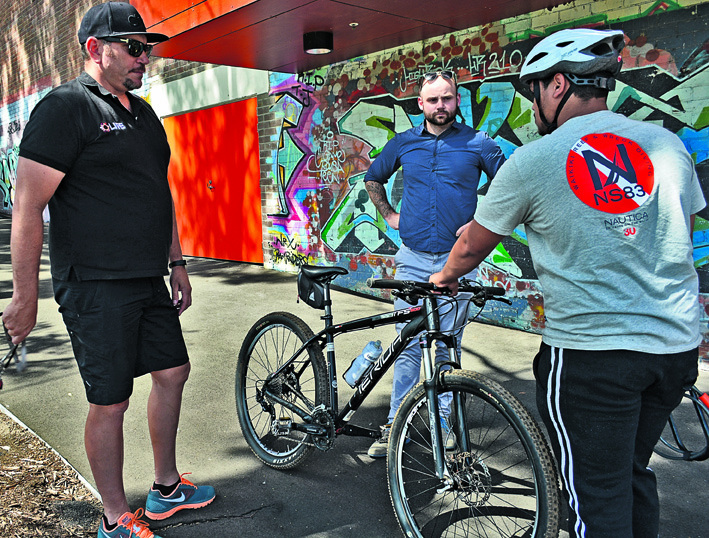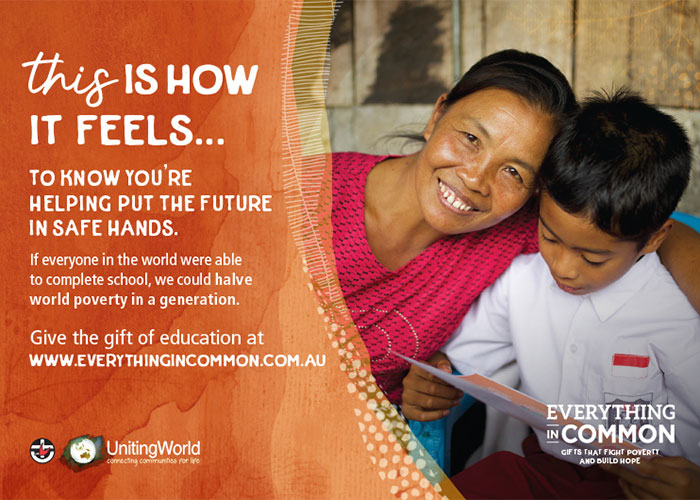REDFERN: Sean Appoo has managed the Lifestyle Innovations For Everyone (LIFE) program of the National Centre of Indigenous Excellence (NCIE) for three years. In that time he has seen the initiative evolve from face-to-face “classroom” activities to a more outdoors-based program. Participants enjoy swimming, cycling, mountain-biking, paddle-boarding and fishing, exercise and nutrition classes, with an overall emphasis on healthy living. A strong component of the program supports those who want to quit smoking.

“After exercise we often see smokers huffing and puffing, struggling to breathe. That’s a place to start the conversation, with an incentive to better enjoy fun activities and exercise,” Sean says. “It’s important to separate the issues of nicotine craving and stress relief. There’s also a habit component and, of course, the high cost of smoking cigarettes.”
The NCIE’s LIFE team comprises Sean, Ben, Josh, Yale and Steven. Participants are drawn from all parts of south-east Sydney. Fred, a client at Weave Youth & Community Services in Waterloo who is also enrolled in a Koori Job Ready course, has borrowed one of the LIFE bicycles (a mountain bike) for the 12 weeks of the construction industry course. The collaboration between Weave, NCIE’s Job Ready and LIFE programs promises a healthy and productive period for Fred.
Elaborating on the quit-smoking campaign, Sean says: “Nicotine replacement therapy is helpful, but people need to develop alternative ways to cope with life and stress – smoking offers just a short-term means of coping, but the long-term effects are disastrous. It’s also important to recognise the social aspect to smoking that’s quite unique – smokers enjoy the ritual of smoking together. We ask, what else might you do to help meet this social need? Why not go for a run or bike ride with a friend? Why not go for a walk around the oval? Or take a break and have a cup of tea?
“It’s true that smoking is seen as a rite of passage for many young people. We need to retrieve and develop healthy rites of passage. We need to encourage an inner strength in young people – to recognise that every effort to quit smoking brings opportunities for learning.”
Sean acknowledges that smoking is particularly damaging to Indigenous families and communities. The statistics are alarming. “Around 50 per cent of the Indigenous population are smokers, as opposed to 18 per cent of the non-indigenous population. The trends are decreasing, however, so that’s very hopeful,” he says.
“Smoking ceremonies are a healthy part of our culture and traditions, but smoking tobacco was never part of our culture and does all kinds of harm. A cigarette contains over 7,000 toxic chemicals. Chewing tobacco is not a healthy alternative, nor are e-cigarettes. The aim is to empower people to act on their knowledge of the harm of tobacco.”
The LIFE Facebook page is a repository of creative resources. There are community-service advertisements and links to a YouTube channel. An application is also available for people to answer questions about lifestyle, eating and drinking habits, exercise and sleep patterns, medical and family history, and so on. The app then constructs a tree graphic, the branches of which represent various aspects of the respondent’s health and wellbeing. The aim is to promote self-awareness and healthy lifestyle changes, to “grow a strong and healthy tree”.




